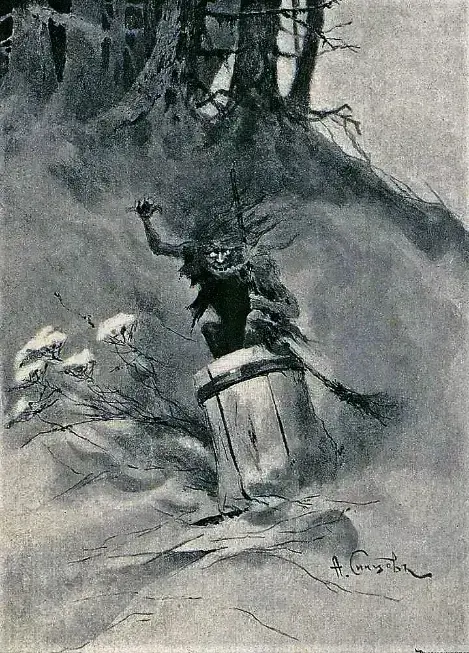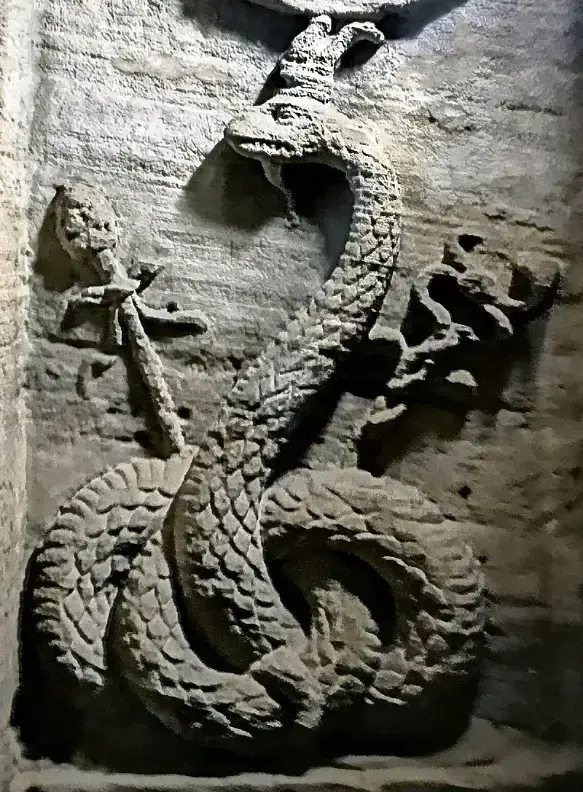Baba Yaga

Baba Yaga is an enigmatic character from Slavic folklore with dual contrasting roles. In some tales, she appears as a fearsome old woman who consumes children, while in others, she helps the hero as a benevolent figure. Closely connected to the forest and its wildlife, her most distinctive features include flying in a wooden mortar while wielding a pestle, and living deep in the forest in a magical hut supported by chicken legs.
The name "Baba Yaga" appears in various forms across Slavic languages. In Serbo-Croatian, Macedonian, Romanian, and Bulgarian, "baba" means "grandmother" or "old woman." Modern Polish and Russian use "baba"/"баба" as a pejorative term for women, particularly those who are elderly, unkempt, or foolish. Like other Slavic kinship terms, it can apply to various animals, natural phenomena, and objects including certain mushrooms, cakes, and pears. Scholar Andreas Johns suggests that "Baba" serves dual linguistic purposes: making the unfamiliar "yaga" more accessible and identifying the character as female.
The etymology of "yaga" remains debated among scholars. In the 19th century, Alexander Afanasyev proposed its derivation from Proto-Slavic *ož and Sanskrit ahi (meaning "serpent"), a theory further examined by 20th-century scholars. Related terms include Serbian and Croatian jeza ("horror," "shudder"), Slovene jeza ("anger"), Old Czech jězě ("witch"), modern Czech jezinka ("wicked wood nymph"), and Polish jędza ("witch," "evil woman"). The term appears in Old Church Slavonic as jęza/jędza ("disease"). Scholars have connected the element "iaga" to Lithuanian engti ("to abuse," "to belittle"), Old English inca ("doubt," "worry," "pain"), and Old Norse ekki ("pain," "worry").


